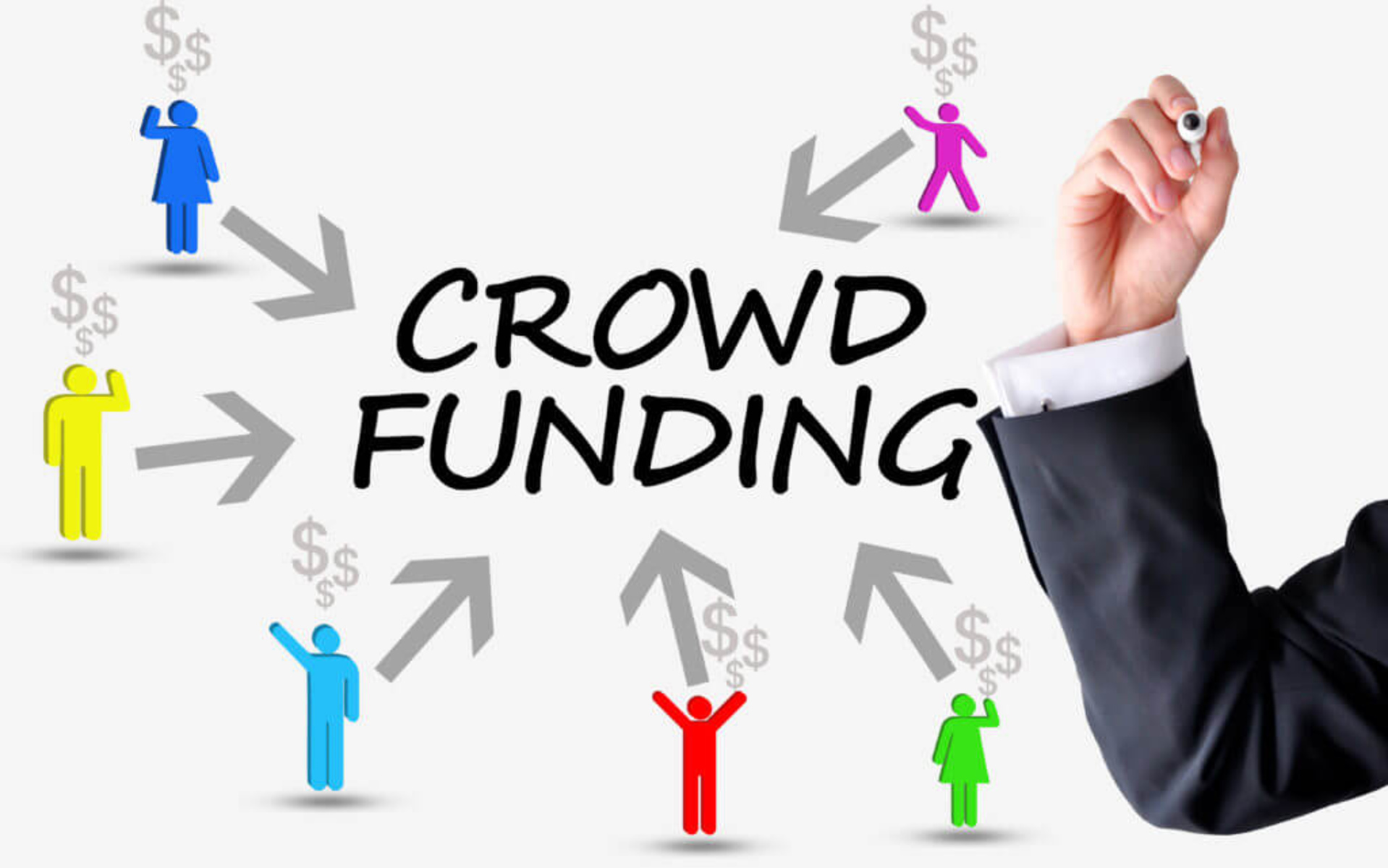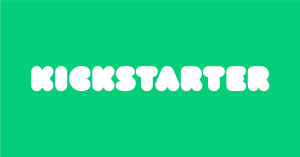Introduction
Crowdfunding has emerged as an innovative and accessible way for individuals, entrepreneurs, and organizations to raise funds for their projects, ventures, or causes. This digital fundraising method has gained significant popularity in recent years, providing a platform for creative endeavors, business startups, social initiatives, and charitable campaigns to reach a broader audience and secure financial support.
Crowdfunding harnesses the power of the internet and social networks to connect individuals who need funding with potential donors or investors who are willing to contribute to their cause. It offers a unique opportunity to bypass traditional financial institutions and engage directly with the community, empowering both individuals and organizations to pursue their dreams and make a difference.
Innovators, artists, entrepreneurs, activists, and even regular individuals with a compelling story or project can turn to crowdfunding to raise the necessary capital. The concept revolves around the collective contribution of a large number of individuals, each giving a relatively small amount towards the fundraising goal. In return, funders may receive rewards, equity in the company, or simply the satisfaction of supporting a cause they believe in.
As the popularity of crowdfunding continues to soar, it is essential to understand how this modern fundraising phenomenon works and how much money can be raised through such platforms. This article aims to explore the various types of crowdfunding, factors that influence the amount of money raised, success stories from notable campaigns, and tips to maximize fundraising efforts.
What is crowdfunding?
Crowdfunding is a form of financing that leverages the collective contribution of a large group of individuals to fund a project, business idea, or social cause. It involves raising small amounts of money from a large number of people, typically through online platforms, to reach a specific funding goal.
The concept of crowdfunding is rooted in the idea of community support and collaboration. It allows individuals and organizations to tap into the collective power of the crowd instead of relying solely on traditional funding sources such as banks or venture capitalists. Through crowdfunding platforms, project creators can present their ideas, set a funding target, and invite people to contribute to their cause.
There are different types of crowdfunding models, each with its own dynamics and objectives. The four main types include rewards-based crowdfunding, donation-based crowdfunding, equity-based crowdfunding, and debt-based crowdfunding.
In rewards-based crowdfunding, backers contribute funds to a project in exchange for predetermined rewards or perks, such as early access to a product, exclusive merchandise, or personalized experiences. This model is often used by artists, inventors, and startups to validate their ideas and generate initial sales.
Donation-based crowdfunding, on the other hand, focuses on raising funds for charitable causes or personal needs. Contributors donate money with no expectation of receiving any material benefits. This model is frequently used for medical expenses, disaster relief efforts, or community projects.
Equity-based crowdfunding allows individuals to invest in a company in exchange for equity. Investors become partial owners of the business and have the potential to benefit from its future success. This model is heavily regulated and is typically used by startups and small businesses seeking funding.
Debt-based crowdfunding, also known as peer-to-peer lending, connects borrowers with individuals willing to lend money. Instead of going through traditional financial institutions, borrowers can secure loans directly from the crowd, often at lower interest rates. This model provides an alternative borrowing option for individuals and small businesses.
In summary, crowdfunding has revolutionized the way projects are funded, providing a platform for individuals and organizations worldwide to bring their ideas to life and make a positive impact. It enables creators to access capital, build a community around their projects, and turn their dreams into reality through the support of ordinary individuals who share their vision.
How does crowdfunding work?
Crowdfunding operates on online platforms specifically designed to facilitate fundraising campaigns. The process typically involves several key steps:
- Project Creation: The first step is for the project creator to create a profile or campaign on a crowdfunding platform. They outline their project, set a funding goal, and provide details about what the funds will be used for.
- Promotion and Marketing: Once the project is live on the platform, the creator needs to actively promote and market their campaign. This may involve utilizing social media, email marketing, reaching out to personal networks, and leveraging any other available channels to spread the word about the project.
- Appealing to the Crowd: To attract contributors, the project creator must craft a compelling pitch that clearly communicates the purpose, benefits, and potential impact of the campaign. This includes showcasing any relevant content, such as videos, images, or testimonials, to engage potential supporters and build trust.
- Setting Funding Goals and Rewards: Depending on the crowdfunding model chosen, the project creator needs to determine the funding goal and the rewards or perks they will offer to backers. These rewards act as incentives for people to contribute to the campaign and can vary in value depending on the amount pledged.
- Engaging with Backers: Throughout the crowdfunding campaign, it’s crucial for the project creator to engage with their backers and provide regular updates on the progress of the project. This helps maintain transparency and build a sense of trust and excitement among the supporters.
- Funding Deadline: A crowdfunding campaign typically has a specified time period during which funds can be raised. This creates a sense of urgency for potential backers to contribute and helps create momentum for the campaign.
- Receiving Funds: If the funding goal is met or exceeded by the deadline, the funds are typically transferred to the project creator. The crowdfunding platform may deduct a fee or commission for providing the service.
- Project Execution: Once the funds have been received, the project creator can proceed with executing their plans and bringing their project to life. This may involve manufacturing products, producing content, initiating social initiatives, or fulfilling any promises made to backers through the campaign.
- Providing Updates and Rewards: Throughout the project execution, the creator continues to share updates with the backers, keeping them informed about the progress, milestones, and any challenges faced. They also fulfill the promised rewards or perks to the backers as a token of appreciation for their support.
Overall, crowdfunding democratizes the funding process, allowing creators to leverage the power of the crowd to bring their ideas to fruition. By utilizing online platforms and engaging with an audience of potential backers, individuals and organizations can access the funds needed to turn their dreams into reality.
Types of crowdfunding
Crowdfunding encompasses various models, each with its own unique features and objectives. Understanding the different types of crowdfunding can help project creators determine the best approach for their fundraising efforts. Here are the four main types of crowdfunding:
- Rewards-based crowdfunding: In this model, project creators offer rewards or perks to individuals who contribute to their campaign. These rewards can range from early access to a product, exclusive merchandise, or personalized experiences. Rewards-based crowdfunding is often utilized by artists, inventors, and startups as a means to validate their ideas, generate initial sales, and build a loyal customer base.
- Donation-based crowdfunding: This type of crowdfunding focuses on raising funds for charitable causes or personal needs without any expectation of receiving material benefits in return. It is commonly used to support medical expenses, disaster relief efforts, educational initiatives, community projects, and other philanthropic endeavors. Donation-based crowdfunding allows individuals to rally support from the community and make a positive impact.
- Equity-based crowdfunding: Equity-based crowdfunding allows individuals to invest in a venture or company in exchange for equity or ownership. This model is typically used by startups and small businesses seeking capital. Investors become partial owners of the business and have the potential to profit from its growth and success. Equity-based crowdfunding is subject to regulations and often requires compliance with securities laws.
- Debt-based crowdfunding: Also known as peer-to-peer lending, debt-based crowdfunding connects borrowers with individuals willing to lend money. Unlike traditional lending through banks, borrowers can secure loans directly from the crowd. This model allows borrowers to access capital at potentially lower interest rates and provides an alternative lending option for individuals and small businesses.
Each type of crowdfunding offers unique advantages and considerations. Project creators need to carefully assess their goals, target audience, and the nature of their project to determine the most suitable crowdfunding model. It is important to consider factors such as the potential for rewards, the level of involvement and accountability to backers, legal and regulatory requirements, and the overall alignment with the project’s objectives.
Additionally, hybrid models or variations of crowdfunding have emerged, combining elements of two or more types. These blended models enable project creators to tailor their fundraising approach to specific needs and circumstances. It is crucial for project creators to thoroughly research and understand the mechanics and requirements of each crowdfunding type to make informed decisions and maximize their fundraising potential.
Factors that determine the amount of money raised
Several factors play a crucial role in determining the amount of money that can be raised through a crowdfunding campaign. Understanding these factors can help project creators develop strategies to maximize their fundraising potential. Here are some key factors that influence the success of a crowdfunding campaign:
- The quality of the project: The quality, uniqueness, and viability of the project or idea being presented have a significant impact on its fundraising potential. Backers are more likely to contribute to projects that they find compelling, innovative, and potentially impactful.
- The clarity of the campaign: A well-structured and clearly communicated campaign attracts more attention and builds trust among potential backers. The campaign page should clearly outline the project’s purpose, goals, and how the funds will be utilized. Transparency and authenticity are key factors in gaining the trust of the crowd.
- The size and engagement of the network: The size and engagement of the project creator’s network play a substantial role in crowdfunding success. A large and active network can help spread the word about the campaign, reach a wider audience, and generate more contributions. Engaging with the network, whether it’s friends, family, colleagues, or online communities, is essential to garner support.
- Marketing and promotion efforts: Effective marketing and promotion strategies are vital for increasing campaign visibility and attracting backers. Utilizing social media, email marketing, content creation, influencer partnerships, and other digital marketing techniques can help generate buzz and draw attention to the campaign.
- The timing of the campaign: Timing is an often underestimated factor in crowdfunding success. Launching a campaign when there is a relevant news event, a holiday season, or a period of increased interest in the project’s niche can significantly boost contributions. Additionally, avoiding periods when potential backers may be focused on other distractions is crucial.
- The crowdfunding platform: Choosing the right crowdfunding platform can impact the success of a campaign. Different platforms have varying features, user bases, and target audiences. Researching and selecting a platform that aligns with the project’s goals and target market can maximize exposure and increase the chances of receiving contributions.
- The campaign’s fundraising goal: The fundraising goal should be realistic and achievable. Setting a goal that is too high may deter potential backers, while setting it too low may not generate enough funds to fulfill the project’s requirements. Demonstrating a clear plan for how the funds will be utilized can also provide reassurance to potential backers.
- The rewards or perks offered: In rewards-based crowdfunding, the quality and desirability of the rewards offered to backers can significantly impact the amount of money raised. Unique, valuable, and exclusive rewards can incentivize individuals to contribute more generously to the campaign.
While these factors are important, it’s essential to recognize that every crowdfunding campaign is unique and outcomes may vary. Combining a well-crafted campaign, effective marketing efforts, strong network engagement, and strategic timing can increase the likelihood of achieving the desired fundraising goal.
Rewards-based crowdfunding
Rewards-based crowdfunding is a popular model that allows project creators to offer rewards or perks to individuals who contribute to their campaign. This model serves as an incentive for people to support the project financially, as they receive tangible benefits in return for their contributions. Rewards can vary depending on the project and the level of contribution, ranging from token gestures to unique and exclusive experiences.
One of the primary advantages of rewards-based crowdfunding is that it provides project creators with an opportunity to validate their ideas and generate early sales. By offering rewards that are directly related to the project, creators can test the market demand and assess the viability of their product or service.
Project creators need to carefully consider the rewards they offer to backers. The rewards should be enticing, valuable, and relevant to the project. This could include pre-ordering the product, limited edition merchandise, personalized thank you notes, or access to exclusive content. The more appealing the rewards, the more likely individuals are to contribute higher amounts to the campaign.
To run a successful rewards-based crowdfunding campaign, project creators need to communicate the value and uniqueness of their rewards effectively. They should clearly outline what each reward entails and how it relates to the project. Utilizing visual elements such as images and videos can help showcase the rewards and engage potential contributors.
Moreover, creators should establish a clear timeline for when rewards will be distributed. It is crucial to communicate realistic delivery estimates and keep backers updated on the progress of the project. This helps build trust and ensures that contributors feel appreciated and involved throughout the process.
Crowdfunding platforms dedicated to rewards-based campaigns, such as Kickstarter and Indiegogo, provide a supportive infrastructure for running these types of campaigns. These platforms offer project creators the necessary tools to create engaging campaign pages, track contributions, communicate with backers, and manage the fulfillment of rewards.
Overall, rewards-based crowdfunding is an effective way for individuals, artists, entrepreneurs, and startups to not only raise funds but also engage with their audience and build a loyal customer base. It allows creators to gather early feedback, promote their projects, and validate their ideas while offering backers a meaningful and tangible return on investment.
Donation-based crowdfunding
Donation-based crowdfunding is a form of crowdfunding where individuals or organizations raise funds for charitable causes, personal needs, or community projects. Unlike other crowdfunding models, donation-based crowdfunding does not involve offering rewards or tangible benefits to contributors. Instead, people donate money out of goodwill and the desire to support a cause they believe in.
This type of crowdfunding is widely used for humanitarian purposes, medical emergencies, disaster relief efforts, educational initiatives, and community development projects. Individuals facing financial hardships, medical expenses, or unforeseen circumstances often turn to donation-based crowdfunding to seek assistance.
The success of a donation-based crowdfunding campaign depends on effectively conveying the importance and urgency of the cause. Project creators must clearly articulate the purpose of the campaign, explain how the funds will be used, and provide compelling stories or testimonials to emotionally connect with potential donors.
Transparency and accountability are crucial in donation-based crowdfunding. Project creators need to be transparent about how the funds will be utilized and provide regular updates on the progress of the project. This transparency helps build trust and assures donors that their contributions are making a difference.
Donation-based crowdfunding campaigns often rely heavily on the power of social sharing. People within the creator’s network and beyond are encouraged to share the campaign with their friends, family, and social media contacts. This amplifies the reach and potential impact of the campaign, as more individuals become aware and have the opportunity to contribute.
Crowdfunding platforms dedicated to donation-based campaigns, such as GoFundMe and YouCaring, provide the necessary tools and infrastructure for project creators to launch their campaigns. These platforms enable easy sharing, secure donation processing, and provide features that allow donors to leave messages of support along with their contributions.
One of the key benefits of donation-based crowdfunding is its ability to bring communities together. It provides a channel for people to unite around a common cause, support one another, and make a positive impact. Through the collective generosity of individuals, significant amounts of money can be raised to address pressing needs and make a difference in people’s lives.
In summary, donation-based crowdfunding is a powerful tool for individuals and organizations to seek financial support for charitable causes, personal hardships, and community projects. It leverages the kindness and empathy of individuals, allowing them to contribute to causes they believe in and make a meaningful difference in the world.
Equity-based crowdfunding
Equity-based crowdfunding is a fundraising model that enables individuals to invest in companies or ventures in exchange for equity or ownership. It provides an opportunity for early-stage startups, entrepreneurs, and small businesses to access capital and for investors to participate in the potential growth and profits of these ventures.
Unlike other crowdfunding models, equity-based crowdfunding involves a financial return on investment rather than receiving rewards or donations. Investors become partial owners of the company and have the potential to benefit financially if the business succeeds.
Equity-based crowdfunding operates under certain regulations and legal frameworks in different jurisdictions to ensure investor protection. These regulations may include limitations on the total amount that can be raised, restrictions on the types of investors, and disclosure requirements for project creators.
Investing through equity-based crowdfunding platforms allows individuals to support innovative ideas, startups, and emerging businesses that may have limited access to traditional financing sources. It democratizes the investment landscape by allowing ordinary individuals to become investors and potentially benefit from the success of these ventures.
Investors should thoroughly assess the potential risks and rewards associated with equity-based crowdfunding. Startups and early-stage ventures are inherently risky, and there is no guarantee of financial returns or the success of the company. It is crucial to carefully evaluate the business model, leadership team, market potential, and other relevant factors before making an investment decision.
Equity-based crowdfunding platforms provide an online marketplace for entrepreneurs to pitch their businesses and for investors to discover and participate in investment opportunities. These platforms typically offer tools for due diligence, communication between investors and project creators, and secure mechanisms for tracking equity ownership.
Equity-based crowdfunding has opened up avenues for entrepreneurs to access capital, validate their business models, and gain support from a wider range of investors. It has the potential to disrupt the traditional investment landscape, making it more inclusive and diverse.
However, it is essential for both entrepreneurs and investors to approach equity-based crowdfunding with caution, seeking legal and financial advice when necessary to ensure compliance with regulations and make informed decisions. With the right due diligence, equity-based crowdfunding can serve as a viable alternative for startups and investors looking to engage in early-stage investment opportunities.
Debt-based crowdfunding
Debt-based crowdfunding, also known as peer-to-peer lending, is a model that connects borrowers with individuals willing to lend money. Unlike traditional lending through banks or financial institutions, debt-based crowdfunding allows borrowers to secure loans directly from the crowd.
In this model, borrowers create profiles on crowdfunding platforms and outline their borrowing needs, repayment terms, and interest rates. Potential lenders can then review these profiles and choose to lend money to the borrower based on their risk appetite and interest in the project.
Debt-based crowdfunding offers several benefits for borrowers. It provides an alternative source of funding, especially for individuals or small businesses that may have difficulty accessing traditional loans. The interest rates offered through peer-to-peer lending platforms can often be more favorable than those offered by banks, making it an attractive option for borrowers.
For lenders, debt-based crowdfunding offers an opportunity to earn interest on their capital by directly supporting individuals and businesses. Through crowdfunding platforms, lenders can diversify their investment portfolio by spreading their funds across multiple borrowers, mitigating the risks associated with lending to a single borrower.
Lenders and borrowers establish a contractual relationship through the crowdfunding platform, which facilitates the transfer of funds and ensures repayment. Platforms often provide secure mechanisms for loan repayment, transparent communication channels, and detailed information about the borrower’s credit history and financial situation to enable lenders to make informed borrowing decisions.
It’s important for both borrowers and lenders to carefully evaluate the risks and benefits of debt-based crowdfunding. Borrowers should consider their ability to repay the loan, understand the associated interest rates and fees, and have a clear plan for utilizing the borrowed funds. Lenders should thoroughly assess the borrower’s creditworthiness, repayment terms, and any potential risks before committing their funds.
Debt-based crowdfunding platforms have gained popularity due to their ability to streamline the lending process, provide access to capital for individuals and small businesses, and offer potential financial returns for lenders. However, it is essential for all parties involved to exercise due diligence, comply with legal and regulatory requirements, and make informed decisions to ensure a positive and secure lending experience.
Comparing the amount of money raised in different crowdfunding campaigns
The amount of money raised through crowdfunding campaigns can vary significantly depending on various factors, including the nature of the project, the target audience, marketing efforts, and the overall appeal of the campaign. While there is no one-size-fits-all formula for success, looking at some notable crowdfunding campaigns can provide insights into the range of possibilities.
Some crowdfunding campaigns have achieved extraordinary success, raising millions or even tens of millions of dollars. For example, the Pebble Time smartwatch project raised over $20 million on Kickstarter, making it one of the highest-funded campaigns at the time. Similarly, the Coolest Cooler, a multi-functional cooler with built-in speakers and other features, raised over $13 million through Kickstarter.
However, it’s important to note that these examples represent exceptional cases and the vast majority of crowdfunding campaigns raise significantly smaller amounts. Many campaigns rely on community support and grassroots efforts to raise modest funding levels that are still meaningful for the project creators.
The success of a crowdfunding campaign is not solely determined by the monetary amount raised but also by the achievement of the project’s funding goal. Meeting or surpassing the funding goal signifies that the project has garnered enough support to move forward. Even campaigns that do not reach their funding goal can still benefit from the exposure, feedback, and networking opportunities that come with running a crowdfunding campaign.
The amount of money raised in a crowdfunding campaign depends on several factors. These include the size and engagement of the project creator’s network, the effectiveness of marketing and promotional efforts, the perceived value of the project or rewards offered, and the alignment of the campaign with current trends or issues. Additionally, campaigns that tap into niche communities or passionate fan bases often have a higher chance of success.
Crowdfunding platforms also play a role in the amount of money raised. Popular platforms such as Kickstarter and Indiegogo have larger user bases and greater visibility, increasing the likelihood of reaching a wider audience. However, smaller, niche platforms may offer a more targeted audience and higher contribution rates in certain industries or communities.
It’s important to approach crowdfunding with realistic expectations and proper planning. Setting a reasonable funding goal based on the project’s needs and potential market demand is crucial. Careful preparation, effective communication, and ongoing engagement with backers can help maximize the amount of money raised.
Ultimately, the success of a crowdfunding campaign cannot be solely measured by the amount of money raised. The impact, exposure, and opportunities that arise from running a campaign can be equally valuable for project creators, regardless of the funding outcome.
Case studies of successful crowdfunding campaigns
There have been numerous successful crowdfunding campaigns that have captured the attention of the masses and raised significant amounts of money. Here are a few notable case studies that highlight the power of crowdfunding:
1. Oculus Rift: The virtual reality headset, Oculus Rift, created a buzz in 2012 when it launched a Kickstarter campaign to raise funds for development. The campaign quickly gained traction and surpassed its initial funding goal of $250,000 within hours. In total, the campaign raised over $2.4 million, showcasing the strong enthusiasm and demand for immersive virtual reality experiences.
2. Exploding Kittens: In 2015, the card game Exploding Kittens became a record-breaking crowdfunding success story. Created by Matthew Inman, the creator of webcomic “The Oatmeal,” and game designer Elan Lee, the game raised over $8.7 million on Kickstarter. Exploding Kittens’ quirky theme, humorous artwork, and strategic gameplay resonated with backers, making it one of the most successful crowdfunding campaigns in the gaming category.
3. Pebble Time: Pebble Time, a smartwatch with an e-paper display, became a crowdfunding phenomenon in 2015. Building on the success of the original Pebble smartwatch, Pebble Time launched a Kickstarter campaign to fund the development of its next-generation product. The campaign generated immense interest and raised over $20 million, setting a new record for the highest funding total at the time. The Pebble Time campaign highlighted the strong demand for wearable technology and showcased the power of the crowdfunding community.
4. Star Citizen: Star Citizen, an ambitious space simulation video game developed by Cloud Imperium Games, shattered crowdfunding records in the gaming industry. The project was first introduced on Kickstarter in 2012 but later moved to its own platform. Since then, Star Citizen has continually raised funds from dedicated fans and has surpassed $300 million in crowdfunding, showcasing the enduring commitment and enthusiasm of the gaming community.
These case studies demonstrate the tremendous potential of crowdfunding to generate substantial financial support for innovative projects, products, and ideas. They illustrate the ability of crowdfunding campaigns to capture the imagination and passion of individuals who are eager to contribute to projects they believe in.
It is important to note that these success stories are exceptional cases, and not every crowdfunding campaign reaches such extraordinary funding levels. Nonetheless, they serve as inspiration and evidence of the transformative power of crowdfunding in bringing forth creative projects and ideas that may have otherwise struggled to secure traditional funding.
Tips to maximize the amount of money raised through crowdfunding
Running a successful crowdfunding campaign requires careful planning, effective execution, and strategic decision-making. Here are some essential tips to maximize the amount of money raised:
- Set a realistic funding goal: Set a funding goal that reflects the project’s needs and aligns with its potential market demand. A realistic goal increases the chances of reaching it and builds confidence among potential backers.
- Create a compelling campaign page: Craft a visually appealing and engaging campaign page that clearly communicates the project’s story, purpose, and value. Utilize images, videos, and testimonials to make a strong impact on visitors.
- Offer attractive and relevant rewards: Create a range of appealing rewards at various contribution levels. Ensure that the rewards are valuable, unique, and relevant to the project. Consider including limited-edition items or exclusive experiences to incentivize higher contributions.
- Tell a compelling story: Connect emotionally with potential backers by telling a captivating story around the project. Explain why it matters, what problem it solves, and how it will make a difference. Use storytelling techniques to create a sense of purpose and urgency.
- Build a strong online presence: Establish a strong online presence through a dedicated website, social media profiles, and a well-curated online persona. Engage with your audience, share updates, and respond to inquiries promptly. Leverage social media channels to create buzz and drive traffic to your campaign page.
- Tap into your network: Mobilize your network and immediate community. Reach out to friends, family, colleagues, and acquaintances to spread the word about your campaign. Their support can create an initial momentum and attract other potential backers.
- Expand your reach: Go beyond your immediate network by reaching out to relevant media outlets, bloggers, influencers, and industry publications. Seek opportunities for interviews, guest posts, or partnerships that can help increase exposure and attract new backers.
- Engage with your backers: Maintain regular communication with your backers throughout the campaign. Provide updates on the progress, milestones achieved, and any challenges faced. This builds trust, shows transparency, and reinforces the sense of community around your project.
- Offer early-bird specials: Create a sense of urgency and encourage early contributions by offering limited-time early-bird specials or discounts. This can incentivize potential backers to pledge their support sooner rather than later.
- Create a post-campaign plan: Plan for the post-campaign phase, including how you will fulfill rewards, communicate with backers, and continue engaging your audience. This helps maintain a positive relationship with your community beyond the campaign period.
Remember, every crowdfunding campaign is unique, and success is not guaranteed. It requires careful planning, proactive promotion, and ongoing engagement with the crowd. By implementing these tips, you can position your campaign for success and maximize the amount of money raised towards your project’s goals.
Conclusion
Crowdfunding has revolutionized the way individuals, entrepreneurs, and organizations raise funds for their projects, ventures, and causes. It offers a unique opportunity to leverage the power of the crowd and connect with a global audience to secure financial support. Whether through rewards-based crowdfunding, donation-based crowdfunding, equity-based crowdfunding, or debt-based crowdfunding, this modern fundraising phenomenon has proven to be a viable alternative to traditional financing sources.
The success of a crowdfunding campaign relies on various factors, including the quality of the project, effective marketing and promotion, engagement with the crowd, and the choice of crowdfunding platform. By understanding these factors, project creators can strategize and optimize their campaigns to maximize the amount of money raised.
Case studies of successful crowdfunding campaigns highlight the potential for extraordinary funding achievements. However, it is important to recognize that not all campaigns reach such levels of financial success. Even campaigns that fall short of their funding goal can still benefit from the exposure, feedback, and networking opportunities that crowdfunding provides.
To make the most of a crowdfunding campaign, creators should set realistic funding goals, create compelling campaign pages, offer attractive rewards, tell engaging stories, expand their reach, and engage with their backers. It’s essential to build a strong online presence, tap into personal networks, and leverage social media and media outlets to generate buzz and attract potential backers.
Crowdfunding has opened up new possibilities for individuals and organizations to bring their ideas to life, support charitable causes, and access the capital needed to turn dreams into reality. It has democratized the funding landscape, allowing ordinary people to participate in the success of innovative projects and emerging businesses. With careful planning, effective execution, and continuous engagement, crowdfunding can be a powerful tool for those who seek financial support and community validation.












![How Does Crowdfunding Work? [Beginner-Friendly]](https://robots.net/wp-content/uploads/2020/07/How-does-crowdfunding-work-300x212.jpg)












